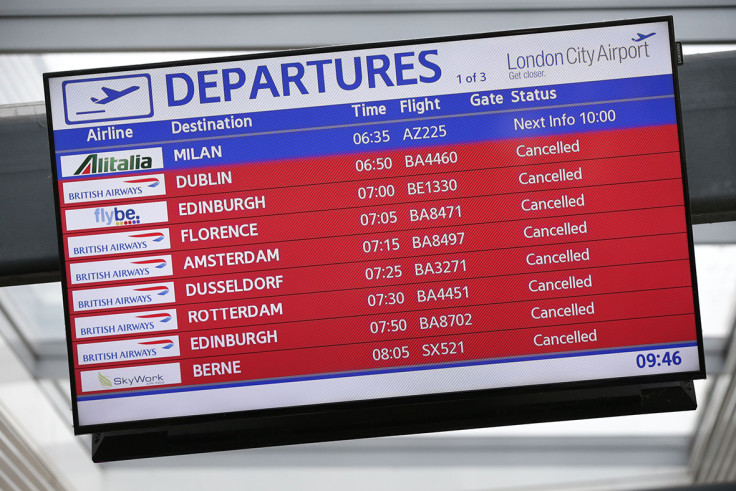London City Airport remains closed and all flights cancelled after discovery of WW2 bomb
KEY POINTS
- Unexploded device found in River Thames during work at airport.
- Passengers urged to contact airlines as flights cancelled all day.
London City Airport remains closed and all flights cancelled following the discovery of an unexploded Second World War bomb in the River Thames.
Work is still underway by the Royal Navy and specialist officers to remove the device after it was discovered during pre-planned work at London City Airport on 11 February.
As a result, the east London airport will remain closed throughout Monday (12 February) as a precaution, with thousands of passengers expecting to travel urged to contact their airline.
Transport for London (TfL) added that DLR services will not run between Pontoon Dock and Woolwich Arsenal due to a 214-metre (700ft) exclusion zone placed around the site.
Bus replacement services will operate between North Greenwich and Woolwich Arsenal, and between Canning Town and King George V stations.

Robert Sinclair, CEO of London City Airport, said: "The airport remains closed this morning following the discovery of a World War Two ordnance in King George V Dock on Sunday. All flights in and out of London City on Monday are cancelled and an exclusion zone is in place in the immediate area.
"I urge any passengers due to fly today not to come to the airport and to contact their airline for further information. I recognise this is causing inconvenience for our passengers, and in particular some of our local residents. The airport is cooperating fully with the Met Police and Royal Navy and working hard to safely remove the device and resolve the situation as quickly as possible."
A Met Police spokesperson said: "The unexploded ordnance was discovered as part of pre-planned work at London City Airport and reported to the police at 05:06hrs on Sunday, 11 February. Specialist officers and the Royal Navy have attended and confirmed the nature of the device.
"At around 10pm on Sunday, 11 February an operational decision was made with the Royal Navy to implement a 214-metre exclusion zone to ensure that the ordnance can be safely dealt with whilst limiting any risk to the public.
"Overnight, officers have been helping to evacuate properties within the exclusion zone and police are working with the local authority to provide residents with temporary emergency accommodation and the appropriate support.
"A number of road cordons are in place, and motorists planning to travel through this part of Newham borough are urged to seek alternative routes.
"The operation to remove the ordnance is ongoing in partnership with our colleagues in the Royal Navy. While we endeavour to progess the operation as quickly as possible and minimise disruption, it is important that all of the necessary steps and precautions are taken to ensure it is dealt with safely. We would like to thank everyone affected for their patience and cooperation."




















